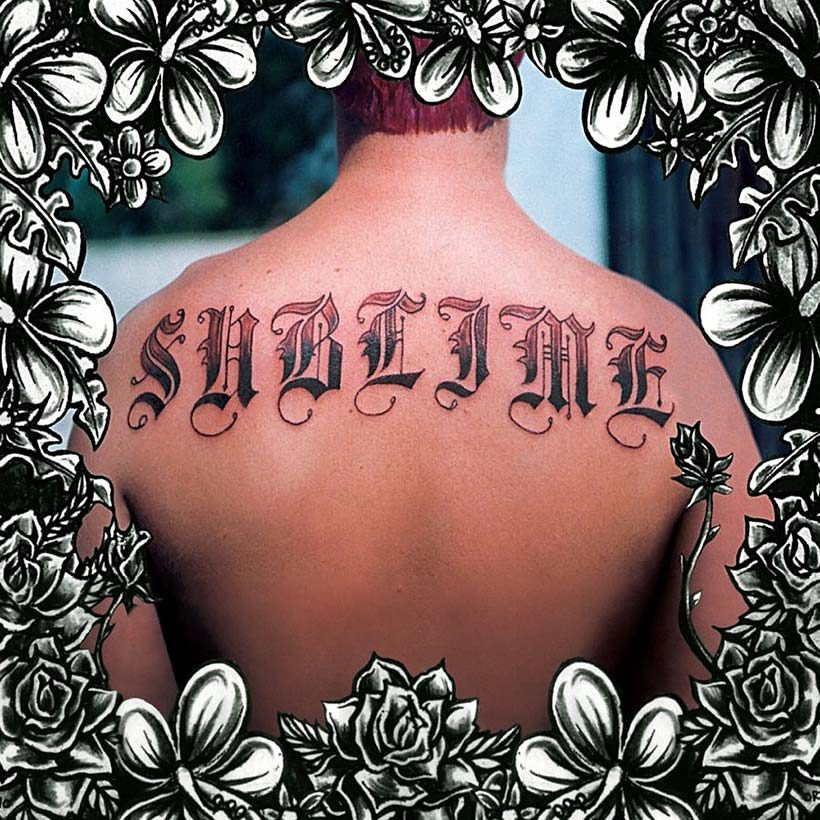How Sublime’s Self-Titled Third Album Yielded Triumph And Tragedy
Released after the tragedy of losing their frontman, Sublime’s self-titled third album remains a testament to their unique sound.

Unfortunately, we’ll never know what pioneering ska-punks Sublime could have achieved. Full of joy, anarchy and devilment, the band’s rollercoaster history is the stuff of legend, but the premature death of frontman Bradley Nowell, just two months before the release of Sublime’s self-titled third album, meant they were unable to reap the benefits of one of ska-punk’s greatest albums.
Listen to Sublime’s self-titled third album.
Nowell’s death, at just 28, brutally truncated eight solid years of dues-paying, which began when childhood buddies Floyd “Bud” Gaugh (drums) and Eric Wilson (bass) began playing together in their Long Beach high-school outfit The Juice Bros: a formative group which also featured Sublime’s future manager, Michael Happoldt.
Broadening their horizons
At this stage, the youthful Californians were exclusively punk fans, but when they befriended guitarist/vocalist Nowell, their horizons broadened significantly. A young musician with catholic tastes, Nowell introduced his new friends to reggae, ska, and hip-hop, all of which would soon be detectable in the DNA of their newly-formed trio, Sublime, when they first trod the boards during the summer of 1988.
Akin to Californian contemporaries like Red Hot Chili Peppers and the fledging No Doubt, Sublime set about creating an original sound through cross-pollinating the musical styles they loved. However, their raucous ska-punk initially had a selective appeal and their nascent fanbase only grew beyond southern California after they released their debut album, 40oz To Freedom, through Nowell’s own Skunk Records imprint in 1992.
A sleeper hit, 40oz To Freedom remained an underground phenomenon until LA rock station KROQ picked up on its key track, “Date Rape,” which led to Sublime securing a deal with MCA offshoot Gasoline Alley and releasing a second full-length effort, Robbin’ The Hood, in 1994. Lo-fi and experimental in design, the album missed the charts, but the band’s constant touring nonetheless ensured their profile continued to rise.
‘A genre and sound totally their own’
The Long Beach trio repaired to Willie Nelson’s studio in Austin, Texas, early in 1996 to record their self-titled third album with producers David Kahne and Butthole Surfers’ Paul Leary at the controls. With their predilection for partying spilling into the studio, the sessions were volatile and anarchic, but while the candle was well and truly burnt at both ends in the process, the record they emerged with was fearlessly executed and brimmed over with madcap energy.
Proving that talent borrows but genius steals, Sublime demonstrated that Nowell and co had developed a magpie-like gift for creating something uniquely theirs from the finest source material going. The lilting ‘What I Got’ and the mellow “Doin’ Time” sailed perilously close to the wind by co-opting melodies clearly sourced from The Beatles’ “Lady Madonna” and George Gershwin’s famous “Summertime,” respectively. However, both tracks were still streaked with maverick excellence on their own terms, as were “Garden Grove,” “Pawn Shop” and “Wrong Way,” which deployed beats and strategic samples, fusing them with elements of punk, ska and the heaviest Jamaican dub with a skill redolent of Beastie Boys’ Paul’s Boutique.
‘A band with great promise – and the confidence to make good on it’
Sadly, while all concerned knew they were onto something good, they never had the chance to enjoy the spoils. With the album in the can and slated for release on July 30, 1996, the band returned to the road, but after a show in Petaluma, California, on May 24, Bradley Nowell died of a drug overdose, aged just 28.
Understandably devastated by the death of their friend, Gaugh and Wilson promptly called an end to the band. While that meant MCA were left to promote Sublime without a group to get behind it, the record simply took on a life of its own.
Reviews from Rolling Stone (“the stuff of a band with great promise and the confidence to make good on it – if only that were possible”) and Spin (“a confident work by an artist just coming into his own”) noted that the album exuded an across-the-board appeal. This soon proved accurate when lead single “What I Got” topped Billboard’s Modern Rock chart, after which Sublime shot to No.13 on the Billboard 200 and kept right on selling – eventually going quintuple-platinum in the US by the end of 1999.
Despite the personal tragedy surrounding its creation, Sublime’s self-titled third album has grown in stature ever since. Regularly cited as a 90s alt-rock touchstone, it remains a popular catalog album and has been reissued a number of times. More recently, one of the band’s most high-profile fans, Lana Del Rey, released an acclaimed cover of ‘Doin’ Time’. Her thoughts on the song echo the reasons why fans still seek out the band today:
“Not a day goes by that I don’t listen to at least one Sublime song,” she said. “They epitomized the SoCal vibe and made a genre and sound totally their own.”












